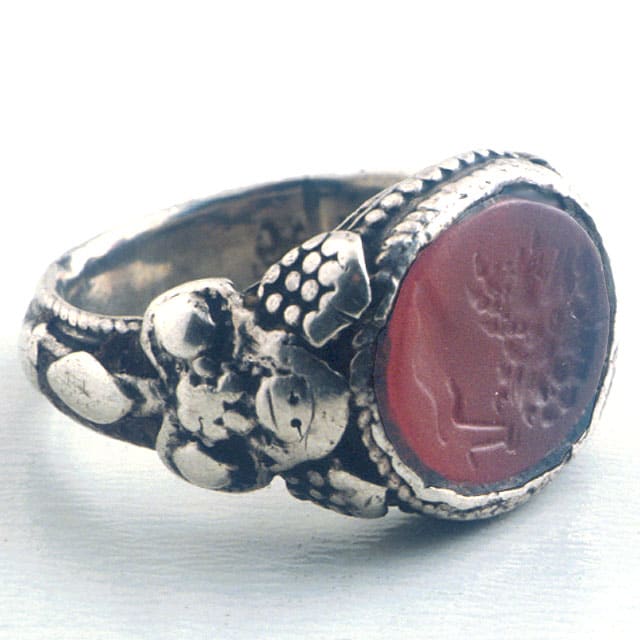Roman Intaglio Depicting Emperor Septimius Severus, 193 CE - 211 CE
Carnelian, Silver
FJ.6396
This Intaglio is Set in its Original Silver Rin The art of glyptics, or carving on colored precious stones, is probably one of the oldest known to humanity. Intaglios, gems...
This Intaglio is Set in its Original Silver Rin
The art of glyptics, or carving on colored precious stones, is probably one of the oldest known to humanity. Intaglios, gems with an incised design, were made as early as the fourth and third millennia B.C. in Mesopotamia and the Aegean Islands. The exhibit a virtuosity of execution that suggests an old and stable tradition rooted in the earliest centuries. The tools required for carving gems were simple: a wheel with a belt-drive and a set of drills. Abrasives were necessary since the minerals used were too hard for a metal edge. A special difficulty of engraving intaglios, aside from their miniature size, was that the master had to work with a mirror-image in mind.
Emerging from a tumultuous period in Roman history, Septimius Severus was just the man to put the empire back on course. A military commander of outstanding ability, Severus became governor of Upper Pannonia after the death of the emperor Commodus. Following the shameful elevation of Didius Julianus to the throne, Severus was saluted emperor by the troops at Carnuntum. Eliminating his rivals he then turned to strengthening the empire, spending much of his reign in many of the provinces. This exceptional intaglio with the noble profile of Severus is set in its original silver ring. The image itself is similar to those on coins minted during Severus' reign. The ring itself is nicely engraved with c1usters of grapes near the rim. To wear this ring is literally to be in touch with the distant past, made even more vivid by fine artistry.
The art of glyptics, or carving on colored precious stones, is probably one of the oldest known to humanity. Intaglios, gems with an incised design, were made as early as the fourth and third millennia B.C. in Mesopotamia and the Aegean Islands. The exhibit a virtuosity of execution that suggests an old and stable tradition rooted in the earliest centuries. The tools required for carving gems were simple: a wheel with a belt-drive and a set of drills. Abrasives were necessary since the minerals used were too hard for a metal edge. A special difficulty of engraving intaglios, aside from their miniature size, was that the master had to work with a mirror-image in mind.
Emerging from a tumultuous period in Roman history, Septimius Severus was just the man to put the empire back on course. A military commander of outstanding ability, Severus became governor of Upper Pannonia after the death of the emperor Commodus. Following the shameful elevation of Didius Julianus to the throne, Severus was saluted emperor by the troops at Carnuntum. Eliminating his rivals he then turned to strengthening the empire, spending much of his reign in many of the provinces. This exceptional intaglio with the noble profile of Severus is set in its original silver ring. The image itself is similar to those on coins minted during Severus' reign. The ring itself is nicely engraved with c1usters of grapes near the rim. To wear this ring is literally to be in touch with the distant past, made even more vivid by fine artistry.
